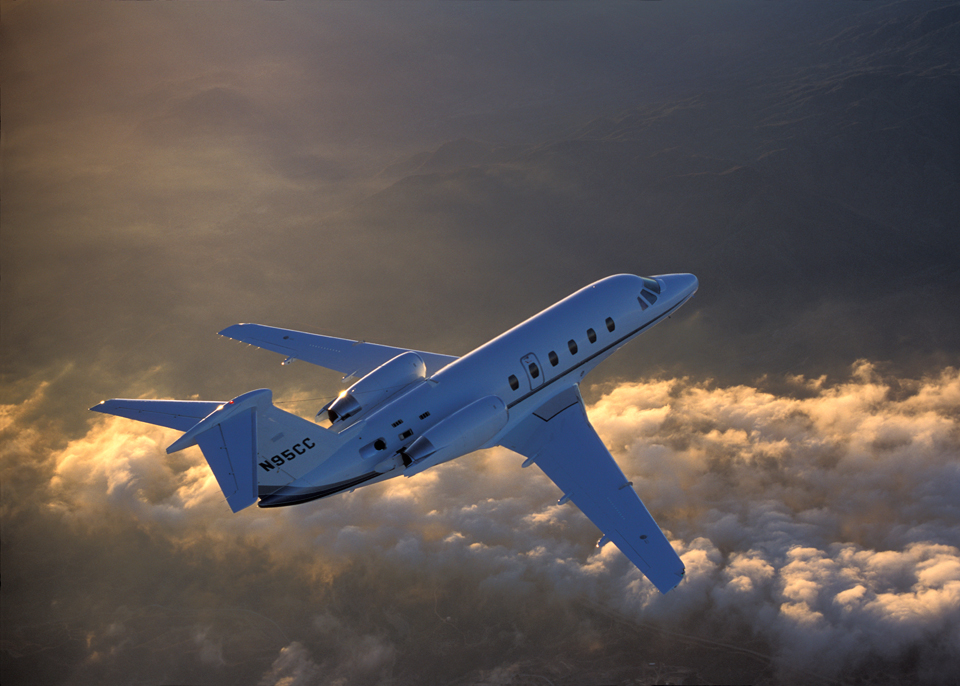Photography by Paul Bowen

The Citation III (Model 650) was Cessna’s first mid-size business twinjet. Unlike the smaller, slower, straight-wing Citation I and II, the Citation III was a clean-sheet design featuring a swept supercritical wing (including composite wing components), a T-tail, and two Honeywell TFE731-3B-100S turbofans rated at 3,650 pounds of thrust each. These design features enabled the aircraft to routinely cruise in excess of 450 knots, much faster than any previous Citation and at speeds competitive with other mid-size jets of the era.
The typical Citation III cabin layout is for six passengers, but a high-density configuration can accommodate as many as nine passengers. The stand-up cabin includes a fully enclosed lavatory, and the aircraft has a 60-cubic-foot, electrically heated baggage compartment, with an external door on the left side. The original Citation III avionics suite typically included the Sperry/Honeywell SPZ-650 integrated flight director/autopilot, Collins Pro Line II radios, and Honeywell Primus 300L radar.
Development of the Citation III started in 1978; a prototype first flew in May 1979 and FAA certification was granted in April 1982. The initial customer airplane was delivered in 1983 to golfer Arnold Palmer, who set a record by climbing to nearly 40,000 feet in just 12 minutes. In 1983, another Citation III set a class speed record, flying from Gander, Newfoundland, to Paris, France, in five hours and 13 minutes.
In 1985 Cessna increased the Citation III’s maximum takeoff weight from 21,000 pounds to 22,000 pounds, which enabled the aircraft to carry up to seven passengers with full fuel. The manufacturer certified an optional -3BR engine upgrade that provided 3,850 pounds thrust on takeoff. Subsequently, Honeywell developed a -3C upgrade to further enhance performance.
Numerous aftermarket enhancements include a three-tube Honeywell CDS/R Epic EFIS retrofit by Pro Star Aviation; installation of a Collins Pro Line 21 Continuum package by Columbia Aviation; and a full refurbishment by Elliott Aviation, which includes installation of Universal EFI890R cockpit displays. Cessna and ARINC have each developed RVSM kits for the Citation III.
The Citation III offered a higher service ceiling, faster speeds, and superior fuel flow numbers, but eventually it was discontinued because it lacked the transcontinental range that many operators desired.
A total of 202 Citation IIIs were built. According to Vref, Citation III values run from $700,000 for a 1983 model to $1.2 million for a 1991 model. The Citation III was superseded by the Citation VI, a lower-cost version of the Citation III—and the Citation VII, offering a higher gross weight, faster cruise speed, and more powerful engines.
Robert A. Searles is a writer and editor specializing in aviation.
SPEC SHEET
Cessna Citation III
Engines | Two Honeywell TFE731-3B-100S turbofans, 3,650 pounds thrust each
Seats | up to 11
Max takeoff weight | 21,000 lbs (22,000 lbs after serial no. 93)
Max cruise speed | 472 kts
Balanced field length | 4,350 ft
Range (with IFR reserves) | 1,950 nm
Wingspan | 53 ft, 6 in
Length | 55 ft, 6 in
Height | 16 ft, 10 in


